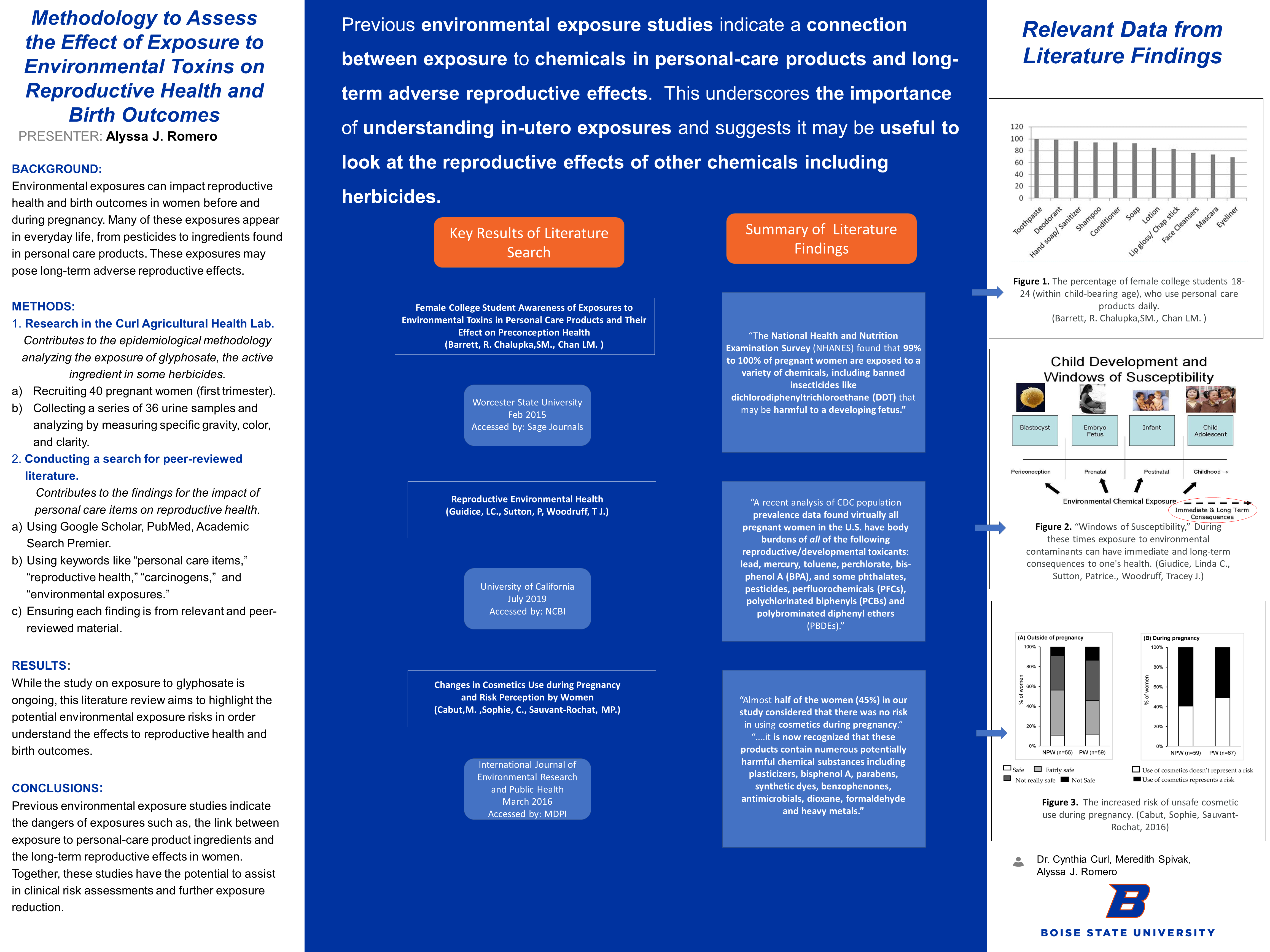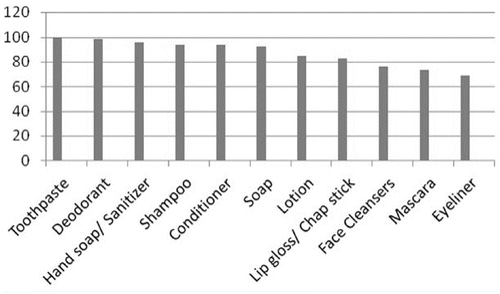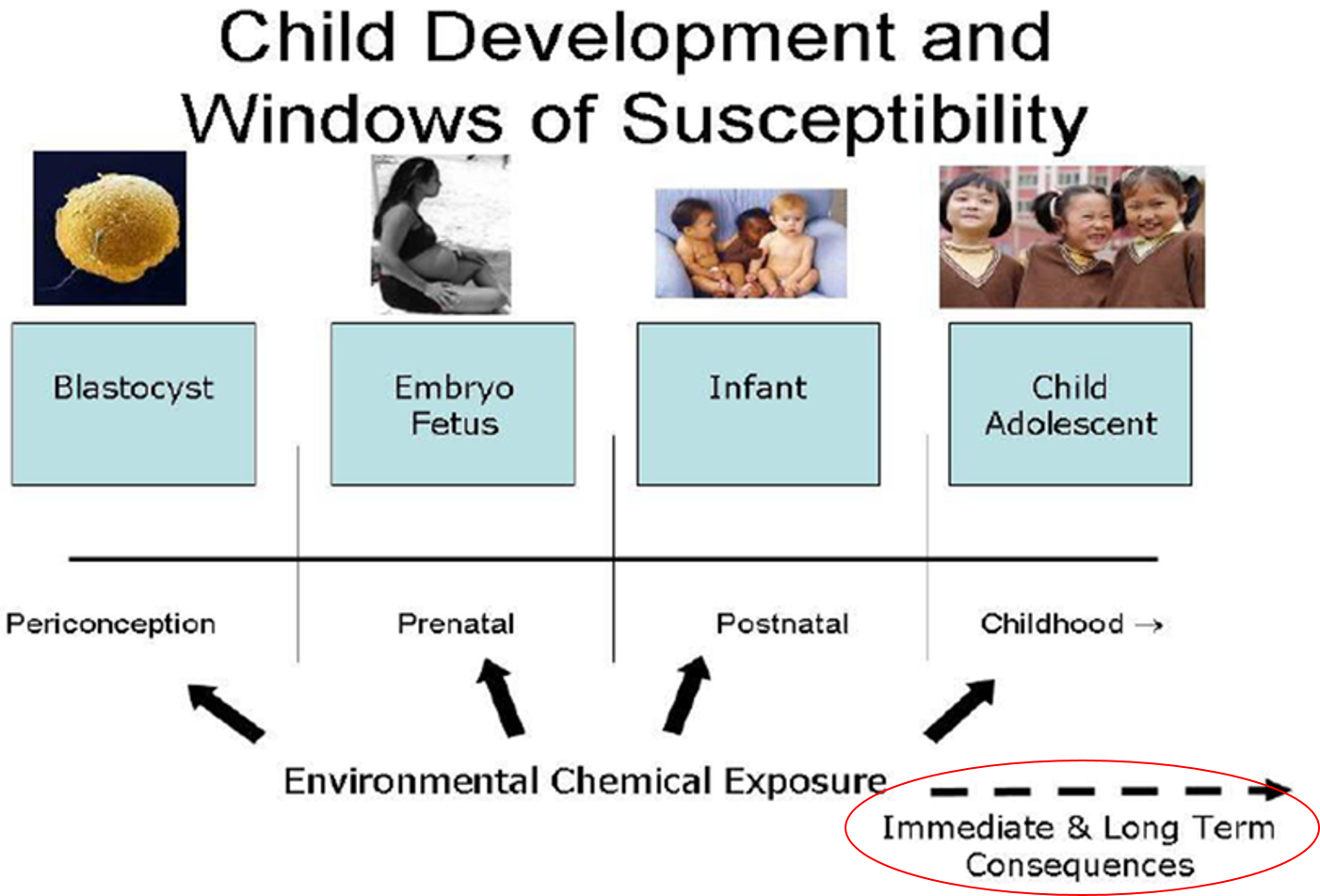Alyssa Jo Romero, Dr. Cynthia Curl, Meredith Spivak

Background
Environmental exposures can impact reproductive health and birth outcomes in women before and during pregnancy. Many of these exposures appear in everyday life, from pesticides to ingredients found in personal care products. These exposures may pose long-term adverse reproductive effects.
Methods
1. Research in the Curl Agricultural Health Lab.
Contributes to the epidemiological methodology analyzing the exposure of glyphosate, the active ingredient in some herbicides.
- Recruiting 40 pregnant women (first trimester).
- Collecting a series of 36 urine samples and analyzing by measuring specific gravity, color, and clarity.
2. Conducting a search for peer-reviewed literature.
Contributes to the findings for the impact of personal care items on reproductive health.
- Using Google Scholar, PubMed, Academic Search Premier.
- Using keywords like “personal care items,” “reproductive health,” “carcinogens,” and “environmental exposures.”
- Ensuring each finding is from relevant and peer-reviewed material.
Results
While the study on exposure to glyphosate is ongoing, this literature review aims to highlight the potential environmental exposure risks in order understand the effects to reproductive health and birth outcomes.
Relevant Data from Literature Findings
Previous environmental exposure studies indicate a connection between exposure to chemicals in personal-care products and long-term adverse reproductive effects. This underscores the importance of understanding in-utero exposures and suggests it may be useful to look at the reproductive effects of other chemicals including herbicides.
Key Results of Literature Search
Female College Student Awareness of Exposures to Environmental Toxins in Personal Care Products and Their Effect on Preconception Health (Barrett, R. Chalupka,SM., Chan LM. ) Worcester State University Feb 2015 Accessed by: Sage Journals
Reproductive Environmental Health (Guidice, LC., Sutton, P, Woodruff, T J.) University of California
July 2019 Accessed by: NCBI
Changes in Cosmetics Use during Pregnancy and Risk Perception by Women (Cabut,M. ,Sophie, C., Sauvant-Rochat, MP.) International Journal of Environmental Research and Public Health
March 2016 Accessed by: MDPI
Summary of Literature Findings

“The National Health and Nutrition Examination Survey (NHANES) found that 99% to 100% of pregnant women are exposed to a variety of chemicals, including banned insecticides like dichlorodiphenyltrichloroethane (DDT) that may be harmful to a developing fetus.”

“A recent analysis of CDC population prevalence data found virtually all pregnant women in the U.S. have body burdens of all of the following reproductive/developmental toxicants: lead, mercury, toluene, perchlorate, bis-phenol A (BPA), and some phthalates, pesticides, perfluorochemicals (PFCs), polychlorinated biphenyls (PCBs) and polybrominated diphenyl ethers (PBDEs).”

“Almost half of the women (45%) in our study considered that there was no risk in using cosmetics during pregnancy.” “….it is now recognized that these products contain numerous potentially harmful chemical substances including plasticizers, bisphenol A, parabens, synthetic dyes, benzophenones, antimicrobials, dioxane, formaldehyde and heavy metals.”
Conclusion
Previous environmental exposure studies indicate the dangers of exposures such as, the link between exposure to personal-care product ingredients and the long-term reproductive effects in women. Together, these studies have the potential to assist in clinical risk assessments and further exposure reduction.
Additional Information
For questions or comments about this research, contact Alyssa Jo Romero at alyssaromero@u.boisestate.edu.